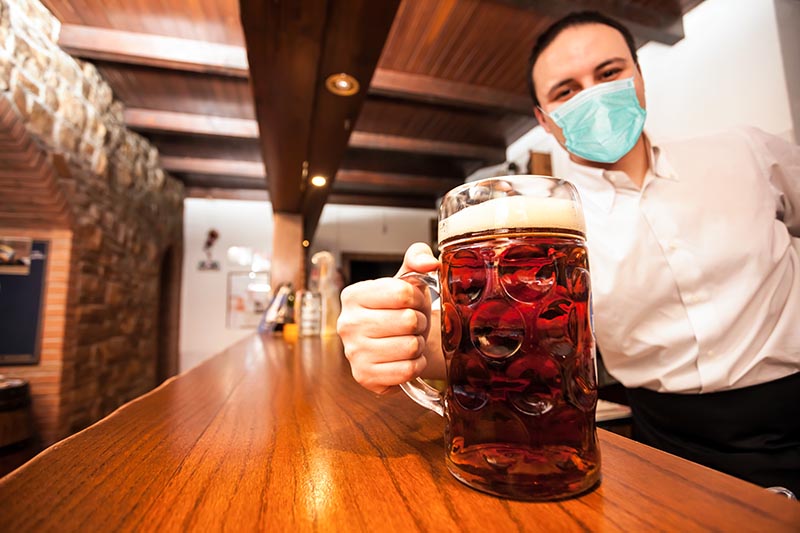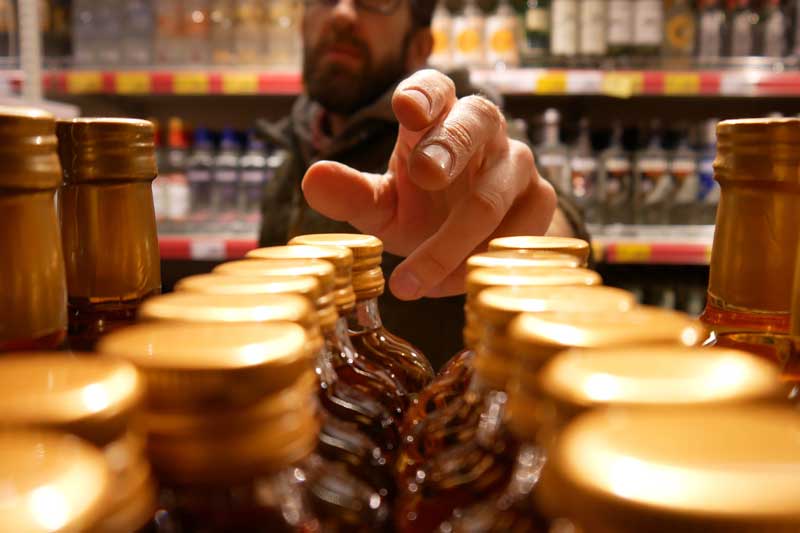Spending Friday evening sipping on a glass of wine inside a trendy wine bar or mingling at the local pub seems to be a luxury of the past.
Since COVID-19 began ravaging the United States in March, indoor dining and drinking have been closed in many states. Those states that do allow indoor dining do so at limited capacity.
The National Restaurant Association conducted a survey that estimates the restaurant and food service industry lost nearly $120 billion in sales during the first three months of the pandemic, according to ABC News. Eateries and bars raked in $38.6 billion in sales in May, on a seasonally-adjusted basis, but that’s down $27 billion from January and February, according to the U.S. Census Bureau.
“In recent years, May was typically the top sales month for restaurants, based on the unadjusted data,” a National Restaurant Association official said. “On average, during the last five years, May sales at eating and drinking places were more than 5% higher than the average monthly sales volume for the entire year. This year, May sales were more than 40% lower than what would have been expected in the absence of the pandemic.”
In states such as California, the governor ordered all bars closed when the virus spiked again. Indoor dining is on hold indefinitely in states such as New York and New Jersey. Currently, New York State doesn’t allow bars or restaurants to sell liquor without also serving food. If people aren’t allowed to gather, what does the future for bars look like?
No drinks without food
Bars are allowed to serve alcohol to customers who are seated at a table. In the past, many bars would have standing patrons drinking and crowded around the bartenders. This rule to only serve seated guests helps encourage social distancing, but it hurts a bar’s bottom line.
The New York State Liquor Authority said the purpose “is to ensure that patrons are enjoying a sit-down dining experience, and not a drinking or bar-type experience which often tends to be problematic from a public health perspective.”
What kind of food qualifies for sit-down-dining varies in New York. One pub put “Cuomo Chips & Salsa” on the menu to get around the rule. In response to bars trying to skirt the rules, Governor Cuomo revoked the liquor licenses of a few bars.
“It’s very tough times for everybody in this industry,” Javier Ortiz, manager of HandCraft Kitchen & Cocktails in New York City, told The New York Post. “It feels like, wow, not only do we have the pandemic against us, but we don’t have the help that we should be having.”
In California, another surge in cases prompted the state government to close bars a second time.
“Simply put, closing the bars worked,” Los Angeles County Public Health director Dr. Barbara Ferrer told Deadline. “It also worked to limit indoor dining at restaurants and to move the operations of various businesses outdoors. This is particularly true in those places where customers were not being to be able to wear their face coverings and/or they were in crowded situations.”
How bars can adapt to changing restrictions
With state orders continually changing, it’s easy for bar owners to feel as if they have whiplash and for liquor brands to worry about the future of sales.
Solutions for bars will vary state-by-state and by what level the local Coronavirus infection rate is at. The last thing a bar owner wants is for their liquor license to be in jeopardy, so start by researching the regulations in your area about what type of food you are allowed to serve and what time you’re allowed to serve alcohol until. Next, work with your local city to try and utilize as much outdoor space as possible to safely maximize outdoor seating for guests. Consider putting a large projector and screen outside to draw patrons for recently resumed sporting events.
For liquor companies, reach out to bars and restaurants to create promotions, such as 20 percent off a bottle of wine with a purchase of a meal.
Certain states and counties also allow cocktails-to-go. Restaurants and bars can get creative and serve punny, pandemic-themed cocktails.
In many states, indoor dining at full capacity will not be allowed for months — if at all — so creativity will be the key to trying to survive and thrive heading into the winter months.
- 87% of Utilities Have Experienced at Least One Data Breach in Last Three Years - February 5, 2024
- Can Drones Lower Your Next Utility Bill? - January 10, 2024
- Onshore Wind Farms Are The Next Big Thing In Renewable Energy - December 6, 2023




